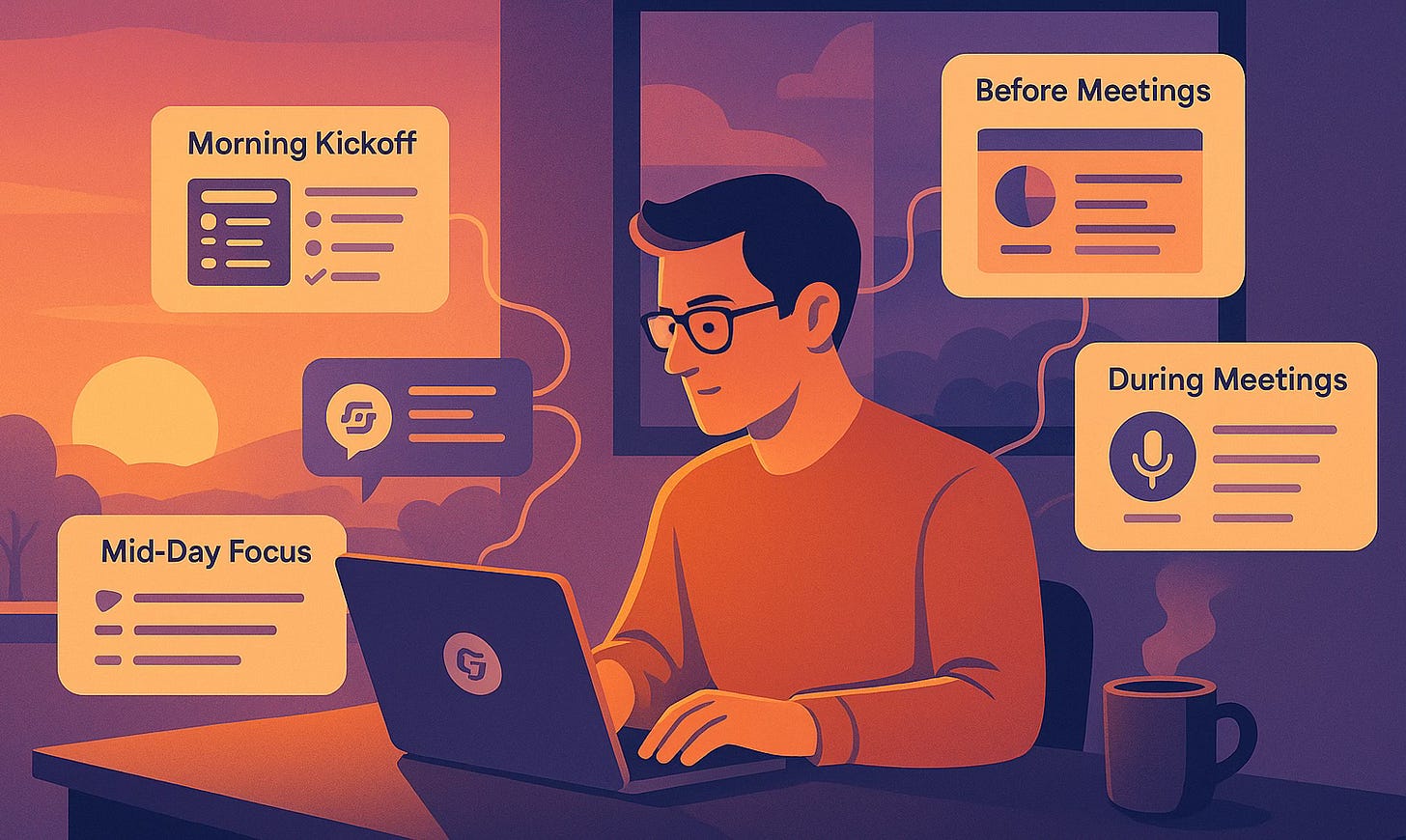Smarter Days: My Business Analyst AI Routine
How small habits create big impact in the era of AI-assisted business analysis
It was early spring, the sun was setting, and I suddenly realized the day was ending — yet I was nowhere near finishing my work. That’s when it hit me: most of my time had slipped away on tasks that added little real value. Hours spent rewriting meeting notes, summarizing Jira tickets, or tweaking documentation.
That frustration is what led me to experiment with AI in my daily routine. And the results were clear: fewer hours wasted, more energy left for collaboration, and problem-solving.
I had been exploring the world of AI and its role in supporting business analysts more broadly — which I covered in a previous article exploring AI’s broader role in business analysis.
Today, let’s zoom in on the day-to-day workflow — practical ways to make your routine smarter, lighter, and more impactful.
How Use AI Throughout the Day
AI doesn’t need to overhaul your workflow — it works best when it slips into small, repeatable habits. Here’s what a typical BA day can look like with AI support:
🌅 Morning Kickoff
Summarize Jira/Confluence issues
Highlight deadlines and blockers
Replace 30 minutes of review with a 5-minute scan
📑 Before Meetings
Auto-draft agendas
Surface recurring themes in feedback
Generate quick diagrams to steer discussion
🗣️ During Meetings
Capture decisions with Otter.ai or Zoom AI Companion
Auto-generate action items in real time
Stay present instead of drowning in notes
📝 Mid-Day Focus
Refine requirements with ChatGPT
Prompt for missing edge cases
Generate acceptance criteria instantly
🌙 End-of-Day Wrap-Up
Summarize progress and completed tasks
Update documentation automatically
Close the day with clarity and alignment
These micro-routines evolve into your personal AI playbook — less typing, more thinking.
Prompt Patterns for Key Use Cases
Tools are only as powerful as the prompts we give them. For business analysts, prompts can act like reusable templates: shortcuts that deliver structured, high-quality outputs in seconds.
Here are a few practical ones to add to your toolkit:
Backlog Review
“Given effort and business value, prioritize these items with reasoning.”Risk Identification
“Act as a risk analyst. Identify risks by category and assess severity.”Requirement Critique
“Review this user story for clarity. Suggest improvements and add acceptance criteria.”Decision Tables
“Create a table showing outcomes based on inputs A, B, and C. Ensure no combination is
Tools and Integrations
Habits and prompts are the foundation — but they become even more powerful when combined with the right tools. AI is no longer something you open in a separate tab; it’s built directly into the platforms we already use every day.
Here are a few examples you can use. The AI space is evolving quickly, so this list is not exhaustive — just a source of inspiration. And if I missed a tool or practice you find really useful, feel free to share it in the comments.
✏️ Discovery & Documentation
Jira / Confluence + Atlassian Intelligence
Figma / FigJam AI
Miro AI
Notion AI
ChatGPT / Claude / Jasper
📊 Analysis & Visualization
Productboard
Amplitude / Mixpanel
Mermaid / Lucidchart + GPT
Security & Ethics for AI in BA Practice
With all these possibilities, it’s tempting to push full speed ahead. Right? 🙂
But AI doesn’t just boost productivity — it changes how information flows. And with that shift comes responsibility.
Here are some key guidelines for safe and ethical use:
Minimize sensitive data exposure – never put personal data into public models
Use enterprise AI platforms – e.g., ChatGPT Enterprise, Azure OpenAI, Confluence AI
Validate outputs – AI can be wrong or biased, always double-check
Stay transparent – let teams know what content was AI-assisted
Comply with regulations – be GDPR-aware, follow internal policies
At the end of the day, trust is the BA’s currency.
Protect it.
Final Thoughts: Connecting to the Bigger Picture
AI is not a silver bullet.
It works best when layered onto collaborative modeling (see Article 1) and continuous discovery cycles (see Article 2). Together, they form the foundation for turning conversations, sticky notes, and experiments into structured, testable documentation.
This is how we link discovery to delivery, and how we scale insights without losing nuance.
The future of business analysis isn’t about doing more — it’s about doing better. By adopting AI as a daily companion, we can shift our energy from low-value admin work to what truly matters: shaping strategy, building alignment, and guiding outcomes.
👉 Start today. Pick one AI habit, test it this week, and see how it reshapes your workflow. Share.


